Our thanks to AL of Aughton for this story that we're delighted to post on QLocal Ormskirk as a superb recollection of times past in Aughton...
A Talk to St Michael’s Fellowship, 8th March 1978On the evening of 8th March 1978, St Michael’s Church Hall in Aughton was packed. We all knew that Miss Marjorie Holmes had lived in Aughton for most of her long life and that she had a wealth of knowledge about our village. I can picture her slight frame as she stood up and can hear her slightly tremulous voice. She was an entertaining speaker and had done her homework about the history of Aughton. The talk was duplicated shortly afterwards and I have kept my copy safely over all these years. The first part covered history from Domesday up to 1907, which was when she moved from Liverpool to Granville Park together with her parents and two sisters, Dorothy and Elsie. The second part I reproduce here with the addition of photos and other relevant information.
And now I come to my second half – my own personal memories of Aughton; a very different Aughton from today. I suppose the population was about 4000 – there was much more farm land and open fields; Aughton at the time covered a larger area.
When my father bought the Tower House and the adjoining one – for the owner would not sell one without the other – there were 20 houses in Granville Park. Today there are 64. I think my father paid £1200 for the two houses. As we had to have a good deal done to the Tower House we were quite a little time before we could remove from our house in Liverpool, and often on a Saturday, when there was no school, my mother would take me with her to see how the workmen were getting on. I think what gave me the greatest pleasure was the very large bedroom allotted to my sister Elsie and me. It had five large windows with a wonderful view on a clear day of the sea at Formby, and the Welsh hills. Another joy was the garden. Although we had a fairly big house in Liverpool the garden had been very diminutive and here was a nicely shaped garden with a lawn big enough for tennis, and well stocked with flowers and shrubs, and that year with runner beans and Victoria plums.
And here I should like to think about our gardeners. Of course during our long years in The Tower House we had various gardeners. I should like to introduce you to three of them. First Mr. Sharples, an elderly Lancashire man with a good knowledge of what to do in a garden. At one time he worked for us and also for our next door neighbour, a pleasant but perhaps rather managing lady. After a time he left her and explained the reason to my mother – I quote his words, “She wanted to larn me and I wasn’t going to be teached by her” – so you see there was a bit of the 'bolshie spirit' abroad in those days.
Next was Mr. Whitehead – quite a different type, with a neat little white beard and a pink and white complexion. He was one of nature’s gentlemen; he always addressed my mother as “Madam”, and we all respected and loved him. He was a keen bowler at Aughton Institute Club and one year won the Silver Cup.
The third one was Mr. Whitehead’s son, Will, who came to us after his father’s death. He had none of his father’s charm, he was a middle-aged embittered man for his wife had left him and he was reserved about his past life. He served us faithfully until old age forced him to give up work. We grew to love him and he loved us. He was only vexed with us if we were ill, for he worried about us. The trouble was that if one of us was ill he would grumble at us all, we all met with his heavy displeasure – for example he would say, “I’m not surprised Miss Dorothy is in bed with a cold, she should never have gone to Liverpool yesterday and Miss Elsie seems to be coughing and you don’t look much better Miss Marjorie”. His speciality was cleaning shoes. If we had been royalty we couldn’t have had a better polish. A great friend of mine who often came to stay with us still remembers the wonderful shine he put on her shoes.
There was, of course, no electricity at all in Aughton, and in many parts no gas. We had gas lighting with old fashioned gas jets upstairs and very fragile, very perishable incandescent mantles in our downstairs rooms.
We moved into the Tower House in October 1907, and I remember that my Aunt Louisa, my elder sister Dorothy and I were sent to receive the first batch of furniture and were then to return to Liverpool. It was rather exciting for Spencer Bros, the Liverpool firm of removers, had arranged for us to have their new motor vans. So we hurried to Tower House to await this novelty, and we waited, and we waited, till someone brought us news that a furniture van, evidently broken down, had been seen at the Old Roan. Leaving the latchkey at the station for the workmen we returned to Liverpool by the last train, probably feeling that sometimes the old ways are better than the new.
A word about the trains. The line was only electrified as far as Aintree, so a little motor train ran up and down between Aintree and Ormskirk, so sometimes we travelled on that and changed at Aintree or else we travelled on an old-fashioned steam train with 1st, 2nd and 3rd class carriages. Only about two people owned cars, but we were well served with cabs – good old four wheelers. Mr. Bradley, Mr. Rimmer and Mr. Hale all leaned over the station railings to solicit orders, and on a wet day you had to signal quickly before the train came to a stop.
The footpaths were all trodden earth, and the roads were gravel or sets or even cobble stones, and there were no street lights anywhere.
What were the shops like? The first two in Town Green (now Mitchells and Parrotts) were run by a Mr. Bygrave and his family. Mr. Bygrave was a Hertfordshire man, aloof, not very friendly, rather worried; always giving his daughter and sons their courtesy title. Mr. Hilary served in the Grocery/Post Office shop; Miss Eva had the little Drapers shop next door, and Mr. Arthur delivered newspapers and post. Next door to Mr. Bygrave was Mrs. Leary, the Greengrocer, a very charming Scottish lady with beautiful white hair arranged in a pretty ‘hair do’, and next door to her was Mr. Bevan the Butcher, whose right-hand man was Alf, the father of our Sid Huyton. In the little shop opposite was a rival butcher, George Johnson, whose descendant comes in a van round Aughton today.
Our Spar shop was then two separate shops, one owned by Mr. Rimmer, the cabman who sold sweets and pop and where the youth of the parish seemed to congregate. The other shop was Preston’s, Grocer and Baker. They made their own bread and delivered it. They had two horse vans driven at one time by David and William Abraham. Mrs. Preston was immaculately clean and thrifty. Tom, her husband, was a terrific size but he too was always swathed in a large immaculately clean bibbed apron. He went once to London with the station master, Mr. Critchley, and was overawed by the traffic. He described his reaction, ‘I was all of a tremble like a little bird’.
Down at Holt Green, four cottages stood where Mrs. Grindrod’s house now is, and Mrs. Hardman had a little sweet shop in the front room of one of these, and in Long Lane I think there was a similar shop, and that was about all.
Perhaps you think how difficult shopping must have been. Not so: all the big shops sent out regularly from Liverpool every week or twice a week – Coopers, Macsymons, George Henry Lee, Bon Marche, Compton House, Bunney’s, Frisby-Dykes – shops that you younger ones have never heard of.
Garsides, in Ormskirk, had a very staid Mr. Smith who came for orders which were delivered later in the week. We had two fish carts that came round, James Iddon, whose brother Edward had the fish shop in Ormskirk, and another man whose name I don’t know but we nicknamed 'Anivegot'. This strange name was given to him because when my mother would ask him, “What have you got this morning?” he would reply, “I’ve got some nice plaice an’ I’ve got some herrings an’ I’ve got hake an’ I’ve got haddock an’ I’ve got shrimps” and so on. So you see shopping was definitely easier and certainly less expensive.
My mother kept very strict housekeeping accounts. I still have her books which she kept from the time of her marriage to almost the end of her life. You would be green with envy if you could see what you could buy for 2d!
Let us go back now to Holt Green and the four cottages which were demolished about twelve years ago.
At one end was Mr. Sam Lake’s cottage and workshop, for he was the village Cobbler, beloved and respected by everyone. He was a Bell-ringer, the deputy Sexton and a member of the Church choir for years, and a member of the Parochial Church Council. His son was our Organist and his three grandsons were also in the choir. They were a wonderful family. Mrs. Lake, the mother of the three boys, was a staunch churchwoman and a loyal member of the Mothers’ Union. Some of you may keep in touch with the boys, but I should like to say a few words about them for those who have never met them. They all began their school life here in St Michael’s school, and they then all passed on to Alsops School, Liverpool.
Frank, the eldest, went on to Edinburgh University to study medicine, and then to Liverpool University to study tropical diseases. Then, fully equipped, he offered himself to the Church Missionary Society for work in India. He married a Nottingham girl but unfortunately she couldn’t stand the Indian climate and Frank returned to England, took a degree in Psychiatry and founded The School of Clinical Theology. The aim of this school was to bring the work of the Doctor and the work of the Clergy into closer touch, and especially to help young ordinands to be better equipped to face their own problems and other people’s problems. He was invited by nearly every Bishop to instruct the young men in their diocese preparing for ordination.
The second son, Ralph, trained as a teacher, served in Burma and India in the war, and finally was appointed Head Master of a school in St Helens. The third son, Brian, followed in Frank’s footsteps and trained at Edinburgh as a Doctor and went to Nottingham to help Frank. I think this shows us the value of the old village Church School.
Now I must come back to Holt Green, the only remaining Green and a much more beautiful one now than the one I remember in the past – then the Cross was broken and the Green itself was mainly muddy pools – no beauty spot!! But a new Cross was given by Mr. Blundell and on February 8th, 1912, to commemorate the Coronation of King George V, Bishop Chavasse came to dedicate it. After a little service the Bishop, Rector Markham, Wardens and others repaired to the school for tea. In those days there were big open fireplaces. Now Rector Markham hated to be cold and he had previously asked Mrs. Bimpson, the School Caretaker, to have a nice warm room, and nearer the time had given her another reminder.
Now Mrs. Bimpson resented the Rector’s lack of confidence in her, so – as she told me some time later (I quote her words), “I said to myself, ‘I’ll roast ‘em out’”. Evidently she attempted to do so, but not Rector Markham. He complimented her cordially on the nice cosy reception given to the Bishop. The base of the old Cross was removed to the Churchyard and placed near the sun-dial.
Here I should like to add that when I look out of my windows or go out of my gate I feel most grateful to the Parish Council and to Mr. John Pinnington for all they have done to restore and preserve the beauty of Holt Green. It is truly one of the beauty spots of the neighbourhood.
And now I must come back to the story of the old Parish Church and its restoration. In 1913 the old Church was closed for worship, and after holding services for a week or two in the schools we moved into a new little galvanised iron temporary Church, which Mr. Markham put up at his own expense. At first it seemed strange, but later we were very happy there because we seemed more like a family, and it certainly held the congregation together.
After about eighteen months we moved back into a very different Church. All the walls, pillars and roof had been stripped of the white plaster, thus displaying the lovely warm coloured stonework; the cumbersome old gallery had been removed; the beautiful oak beamed roofing was revealed. The foundations were strengthened, the very uncomfortable horse-box pews had gone and were replaced by the comfortable oak pews you see today. The organ pipes were moved further back and the benches behind the organ, where the Sunday School boys used to sit, were removed allowing room to form the Lady Chapel or Plumbe Chapel as it was called, (after John Plumbe, elder son of a former Rector about 1796) and new vestries were built on to the north-east of the Church. It was during these alterations and excavations that the Anglian Cross was discovered, indicating that there had been Christian worshippers in Aughton for over 1100 years.
Bishop Chavasse dedicated the restored Church on September 9th, 1914. Roger Francis Markham had succeeded his father Charles Warren as Rector of Aughton. He was nominated by the people of Aughton, and I was told that Mr. Sam Lake, and I think one of the Draper family, went over to Warrington, where he was a Curate, to put the matter before him, and then with the consent of Sir Tristham Tempest, the patron of the living, he was instituted in 1897, and was our Rector until 1944 – a period of 47 years.
Perhaps you would like to know what sort of a man our Rector was. He was a reserved man, a great scholar – he had a wonderful library of some thousands of books. He was a very staunch Churchman, stern yet tender-hearted; generous, quick to rebuke but quick to apologise if he had been too hasty; fearless if he thought it right to speak out; controversial, difficult at times, but to those who knew him, loveable. He loved his home and really disliked the effort of going away, he enjoyed routine. It was a very comfortable and yet an inconvenient house, with its flagged floors, little odd steps, hot water to be carried up to the bedrooms, oil lamps – and so many of them!
He retired in 1944, but by a friendly arrangement with his successor, Canon Jones, he stayed on in the Rectory. He died suddenly on March 4th, 1945. He was on his way to Holy Communion and he fell in the Churchyard just beneath the East window. At his funeral we sang 'Grant to life’s day a calm unclouded ending'.
The old Rectory was sold, and a few years later demolished, on December 21st 1970.
I can’t end without mentioning the two great wars in which Aughton played its part. In the 1914-1918 war there were large numbers of volunteers: Aughton was called ‘Loyal Aughton’ in the local press. There were 77 war deaths including one woman. Aughton Institute was taken over by the War Office for a Convalescent Hospital. Apart from a fully qualified matron it was manned by local volunteer helpers.
In the last war there were 20 deaths. About 200 children from St Michael’s C of E School in Garston were evacuated into Aughton, also military units were lodged in empty houses or billets. I remember the Sunday School was flooded with new scholars for all the foster parents were glad of a quiet Sunday afternoon, and one hardly knew whether to sympathise more with the little strangers uprooted from their homes, or with our own shy rather bewildered children who said sadly to me, “Sunday School isn’t the same”.
The Garston children gradually drifted back and then we had a second group of evacuees, the London mothers and babies escaping from the doodle bombs. 1941 was the time of the terrible bombing of Liverpool and Manchester. Shelters had previously been commandeered in case of such an emergency. In Aughton the Swan Assembly Rooms were Shelter No 1, the little Iron Church which was later a Men’s Club, was Shelter No 2, the WI hut No 3, the Baptist Chapel No 4, and as a last resort, the Schools. The Institute was not available as the Home Guard were using it.
My sister and I were in charge of Shelter No 2, and we had a good rota of helpers. It meant being on duty from about 6.30 pm to 6.00 am. Every evening a medley of vehicles came out to Aughton from North Liverpool – sometimes it was a furniture van with all ages of children herded within. I think the Police reckoned that the floor of our shelter would bear about 98 people. They lay with blankets on the floor. Fortunately the weather in May 1941 was mostly very good, and the children used to hurry into the field by the Church to pick buttercups and daisies and to play until bedtime. The discipline was good for everyone was very tired. One old lady hadn’t slept in her bed since the previous August. The men had to be roused at 5.00 am to get to work at the docks.
During one terrible week of bombing the Police evacuated the entire population of Bootle, and we had to accommodate about 500 people in the Church. On the whole they were wonderfully cheerful and grateful, and our regular ones on leaving presented my sister, who was then Church Warden, with a donation for the Church. We had some drawbacks – we had no blackout and no water. We had to fetch any water we wanted from the Churchyard, but I would like to say how good the special police were in coming at regular intervals throughout the night to see all was well with us.
And now I must close. Now you can compare the old Aughton and the Aughton of today. Looking back, we perhaps long for the peace of the undisturbed countryside, but to me there is one very big compensation – the spirit of kindliness and friendliness which I meet at every turn in Aughton today, and especially in the Christian Fellowship at St Michael’s and in the feeling that I am at home there.
POSTSCRIPT: MISS MARJORIE HOLMES
There were three Miss Holmes sisters when I was at Aughton Parochial School: Miss Dorothy, Miss Marjorie and Miss Elsie. They lived across the road from the school in a house called Littlegarth. They worked tirelessly for St Michael’s Church and Miss Marjorie was Superintendent of the Sunday School for very many years. Miss Dorothy died in 1968, aged 81. Miss Elsie died in 1971 aged 83. Miss Marjorie died in 1985 in Beechwood House, Granville Park, Aughton, aged 93.
|
|
||||||
|
WANTED: YOUR NEWS AND STORIES FOR ORMSKIRK
Phone / Txt Roger on 0754 3955 841 Email local news to us including image(s) ormskirk@qlocal.co.uk Follow / Report to us on Twitter @QlocalOrmskirk
WANTED: YOUR NEWS AND STORIES FOR ORMSKIRK
Phone / Txt Roger on 0754 3955 841 Email local news to us including image(s) ormskirk@qlocal.co.uk Follow / Report to us on Twitter @QlocalOrmskirk 
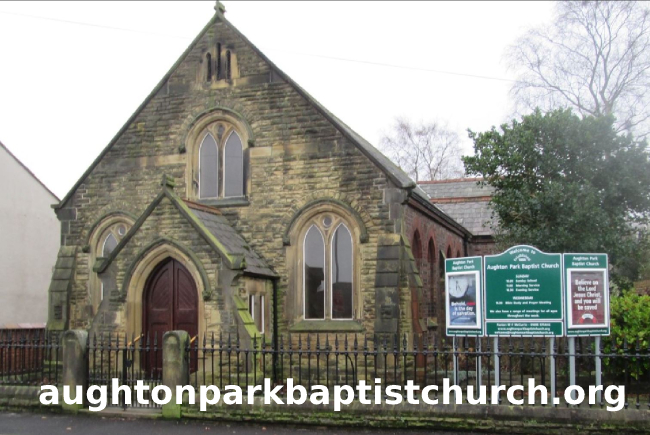
Check Todays Deals on Ebay.co.uk Your Comments:
Custom Search

|
You are in:
UK /
Ormskirk / North West
Find any Town in the UK, or Use UK map Local Google MAP for Ormskirk Check Todays Deals On Amazon.co.uk Check Todays Deals on Ebay.co.uk 
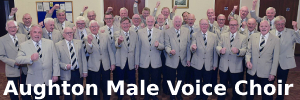
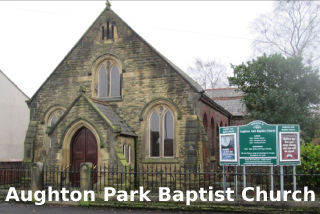
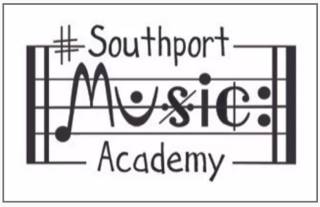
Qlocal Supports Woodlands Animal Sanctuary 
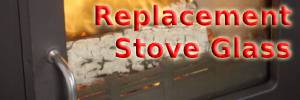
 Be Seen - Advertise on Qlocal Corporate Sponsors
Southport Piano and Music Academy Washroom Services Maximum Grounds Maintenance Southport Garden Services Ormskirk Garden Services Sanitary Bins Nappy Bins & Waste Disposal Confidential Shredding Services Legionella Risk Testing London Washroom Services Croydon Washroom Services Hounslow Washroom Services Wandsworth Washroom Services Havering Washroom Services Sanitary Bins London Clinical Waste London General Waste London Legionella Testing London Shredding London Tatoo Waste London Preston Bird Control Blackpool Bird Control
UK, Local Online News Community, Forums, Chats, For Sale, Classified, Offers, Vouchers, Events, Motors Sale, Property For Sale Rent, Jobs, Hotels, Taxi, Restaurants, Pubs, Clubs, Pictures, Sports, Charities, Lost Found
ormskirk,
ormskirk News,
|
|||||
|
|
|
|




 Reply With Quote
Reply With Quote

